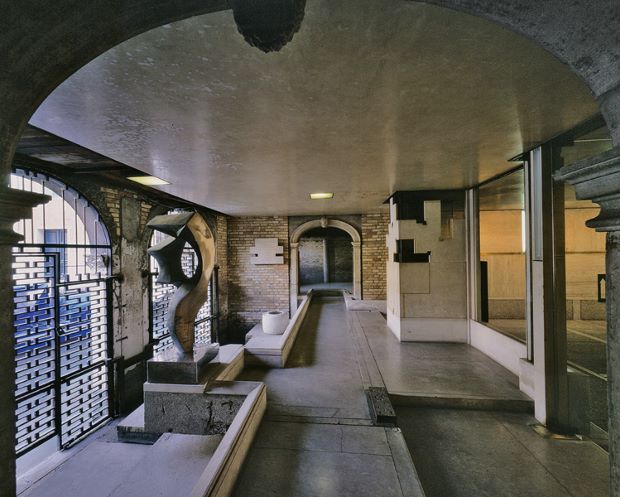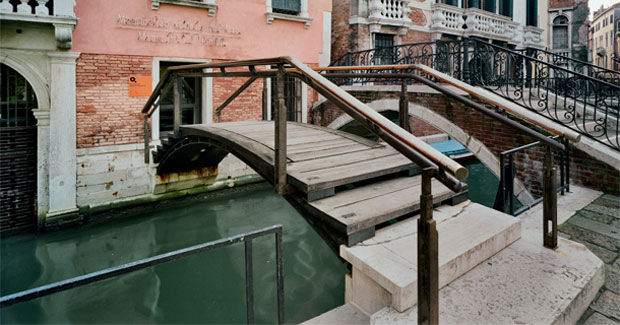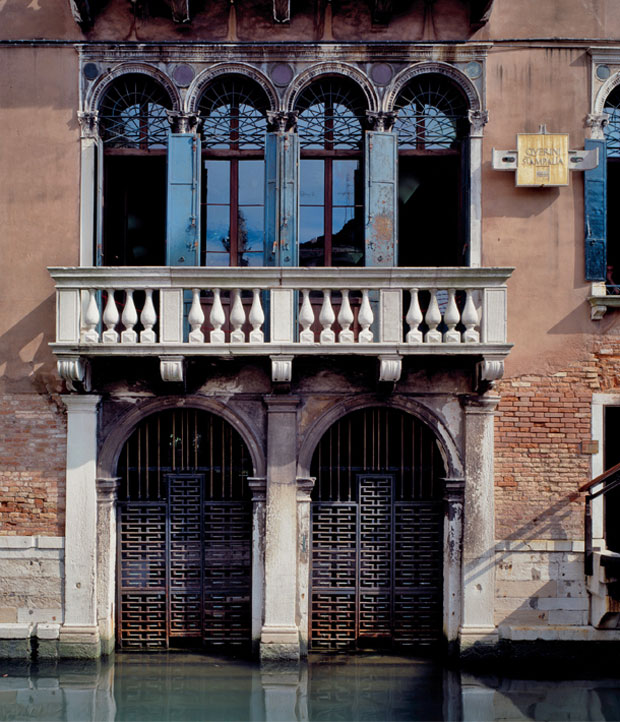
Carlo Scarpa’s surprisingly traditional legacy
The architect’s work might still look modern, yet as a new Venetian show makes clear, Scarpa built on traditions
“One morning in 1961 at the Querini Stampalia,” recalls the Venetian museum’s director, Giuseppe Mazzariol, “I asked Carlo Scarpa to keep water outside the palace. He looked at me and after a pause he said: “Inside, inside! Water must be inside, like everywhere in the city. We just need to control and use it as a shining and reflecting substance. You will see the light reflections on the yellow and purple stuccos on the ceiling. That is so gorgeous!”
It’s a radical response for such a conservative institution. Fondazione Querini Stampalia was established in 1868 by Count Giovanni, one of the last descendants of the Querini family, who were among the first founders of Venice. Its building, the Querini Stampalia Palace close to St Marks Square, dates from at least the fifteenth century.
Surely rising water levels threaten to destroy, rather than enhance this venerable institution? Yet, as a new exhibition at the Querini makes clear, Stampa’s work, both in updating the Querini and elsewhere, in the wider world, was both thoroughly modern, and also in keeping with the city’s centuries-old traditions.

Scarpa might have favoured clean geometry and ample light, but he also understood antique building methods and found ways to integrate existing structures into his new plans.
The Mark of Carlo Scarpa, on now at the Querini until 23 November, looks at both Scarpa’s own work, and his influence on those who’ve come after him. This not only includes fellow building designers such as Mario Botta, but also photographers such as Candida Höfer, Giulio Paolini, and artists such as Michelangelo Pistoletto, as well as offerings from less-obvious curatorial inclusions, such as the choreographer Sasha Waltz, and the composer Atsuhiko.

All this might sound just a touch too heterogeneous; yet Scarpa was a skilled draftsman, a glass maker and interior designer, whose reverence for existing work now seems remarkably prescient, in an age when many architects renovate rather than rebuild.
Drawing from the foundation’s archive, and using Scarpa’s own work within the building as kind of exhibit in itself, we can’t think of a better location to learn more about the man for whom modern building making meant, as Robert McCarter puts it in our monograph, “constituting an integrated part of its historical place and culture.”
For more on the show, go here. For a richer understanding of Scarpa’s life and work, buy a copy of our beautiful book; and for more on 20th century architect, take a look at 20th Century World Architecture.